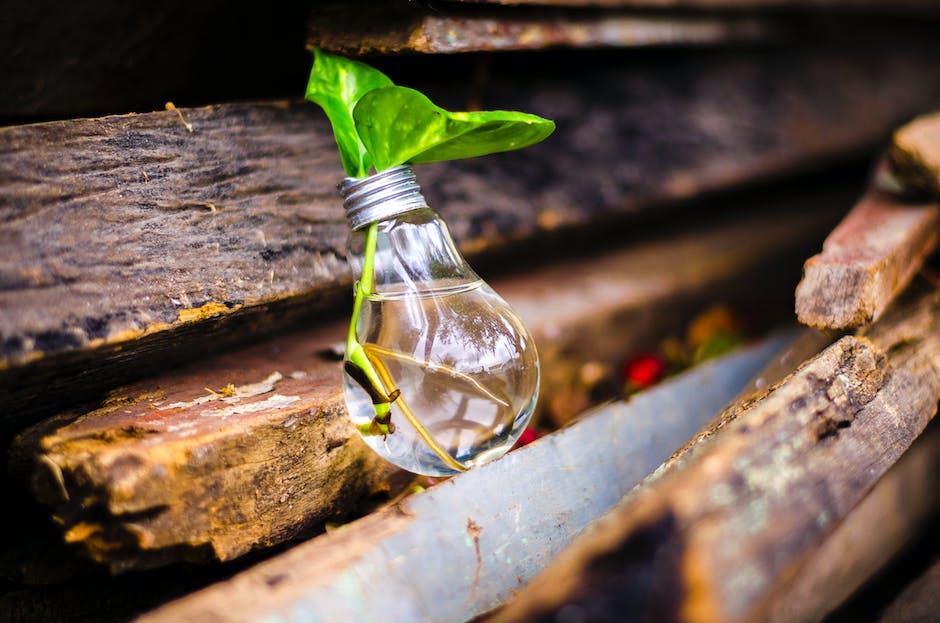Table of Contents
Unveiling the Arab world’s artistic revolution.
Introduction
“Arab Leaders in Contemporary Art: Brush Strokes of Innovation” is a captivating exploration of the influential Arab artists who have made significant contributions to the world of contemporary art. This exhibition showcases the innovative brush strokes, unique perspectives, and groundbreaking techniques employed by these talented individuals. Through their art, these Arab leaders challenge traditional norms, redefine cultural boundaries, and offer fresh insights into the complexities of the modern world. Join us on a journey that celebrates the rich artistic heritage of the Arab world and highlights the remarkable innovation that continues to shape the contemporary art scene.
The Influence of Arab Leaders in Contemporary Art

Arab Leaders in Contemporary Art: Brush Strokes of Innovation
The world of contemporary art has been greatly influenced by Arab leaders, who have made significant contributions to the field. These leaders have not only brought their unique perspectives and experiences to the art world, but they have also challenged traditional notions of art and pushed the boundaries of creativity. Through their innovative brush strokes, they have created a new narrative that reflects the rich cultural heritage of the Arab world.
One of the most prominent Arab leaders in contemporary art is Sheikh Sultan Sooud Al-Qassemi. As a member of the ruling family of Sharjah, he has used his position to promote and support Arab artists. Al-Qassemi is not only an art collector but also a curator and commentator on Arab art. Through his efforts, he has brought attention to the works of Arab artists and helped them gain recognition on the global stage.
Another influential figure in the Arab art scene is Sheikha Hoor Al-Qasimi, the president and director of the Sharjah Art Foundation. She has been instrumental in establishing Sharjah as a hub for contemporary art in the Arab world. Under her leadership, the Sharjah Art Foundation has organized numerous exhibitions and events that have showcased the works of Arab artists. Sheikha Hoor Al-Qasimi’s commitment to promoting Arab art has not only provided a platform for artists to showcase their work but has also fostered a sense of community among Arab artists.
The impact of Arab leaders in contemporary art extends beyond the Middle East. Hassan Sharif, an Emirati artist, is considered one of the pioneers of conceptual art in the Arab world. His work challenges traditional notions of art by incorporating everyday objects and materials. Sharif’s innovative approach has inspired a new generation of Arab artists to experiment with different mediums and techniques.
Another influential Arab leader in contemporary art is Nada Shabout, an Iraqi art historian and curator. Shabout has played a crucial role in documenting and promoting modern and contemporary Arab art. Her research and publications have shed light on the contributions of Arab artists to the global art scene. Through her work, Shabout has challenged the Eurocentric narrative of art history and highlighted the diversity and richness of Arab art.
The influence of Arab leaders in contemporary art can also be seen in the rise of art institutions and galleries dedicated to showcasing Arab art. The Mathaf: Arab Museum of Modern Art in Doha, Qatar, is one such institution. It was established in 2010 with the aim of preserving and promoting modern and contemporary Arab art. The Mathaf has become a platform for Arab artists to exhibit their work and engage in dialogue with the international art community.
In conclusion, Arab leaders have made significant contributions to contemporary art, challenging traditional notions and pushing the boundaries of creativity. Through their support and promotion of Arab artists, they have created a platform for them to showcase their work and gain recognition on the global stage. The influence of Arab leaders can be seen in the rise of art institutions dedicated to Arab art and the growing interest in Arab artists worldwide. As the Arab art scene continues to evolve, it is clear that these leaders will play a crucial role in shaping its future.
Exploring the Innovative Techniques of Arab Artists
Arab Leaders in Contemporary Art: Brush Strokes of Innovation
Exploring the Innovative Techniques of Arab Artists
Contemporary art has become a global phenomenon, with artists from all corners of the world pushing boundaries and challenging traditional norms. In recent years, Arab artists have emerged as leaders in this movement, using their unique perspectives and innovative techniques to make a mark on the art world.
One of the most striking aspects of Arab contemporary art is the use of mixed media. Artists like Mona Hatoum and Hassan Hajjaj have gained international recognition for their ability to seamlessly blend different materials and techniques in their work. Hatoum, for example, combines sculpture, installation, and video to create thought-provoking pieces that explore themes of displacement and identity. Hajjaj, on the other hand, incorporates photography, fashion, and design to challenge stereotypes and celebrate Arab culture.
Another innovative technique employed by Arab artists is the use of calligraphy. Calligraphy has a long history in Arab culture, but contemporary artists have found new ways to incorporate it into their work. Nja Mahdaoui, a Tunisian artist, is known for his abstract calligraphic paintings that combine traditional Arabic script with modern aesthetics. By deconstructing and reimagining calligraphy, Mahdaoui creates visually stunning pieces that challenge the viewer’s perception of language and form.
Arab artists are also pushing the boundaries of traditional painting techniques. Ayman Baalbaki, a Lebanese artist, is known for his large-scale, expressive paintings that capture the raw emotions of his subjects. Baalbaki’s use of bold brush strokes and vibrant colors creates a sense of urgency and intensity in his work. Similarly, Iraqi artist Ahmed Alsoudani uses a combination of painting and drawing techniques to create chaotic and fragmented images that reflect the turmoil of war and conflict.
In addition to their innovative techniques, Arab artists are also using their work to address important social and political issues. Shirin Neshat, an Iranian artist, explores themes of gender and identity in her photography and video installations. Her powerful images challenge stereotypes and give voice to the experiences of women in the Middle East. Similarly, Palestinian artist Emily Jacir uses her work to address issues of displacement and the Israeli-Palestinian conflict. Through photography, installation, and performance, Jacir invites viewers to engage with the complexities of these issues and question their own preconceived notions.
The rise of Arab artists in the contemporary art world is a testament to their talent, creativity, and ability to push boundaries. Through their innovative techniques and thought-provoking subject matter, these artists are challenging traditional notions of art and opening up new possibilities for expression. Their work not only reflects the rich cultural heritage of the Arab world but also speaks to universal themes and experiences.
As the art world continues to evolve, it is important to recognize and celebrate the contributions of Arab artists. Their unique perspectives and innovative techniques have enriched the global art scene and opened up new avenues for dialogue and understanding. By exploring the work of these artists, we can gain a deeper appreciation for the power of art to transcend boundaries and inspire change. Arab leaders in contemporary art are truly leaving their mark, one brush stroke at a time.
Arab Leaders in Contemporary Art: Redefining Cultural Identity
Arab Leaders in Contemporary Art: Brush Strokes of Innovation
Contemporary art has always been a reflection of the times we live in, and Arab artists are no exception. In recent years, there has been a surge of Arab leaders in the world of contemporary art, redefining cultural identity and challenging traditional norms. These artists are using their brush strokes to create innovative and thought-provoking works that are making waves in the art world.
One of the key characteristics of Arab leaders in contemporary art is their ability to blend traditional Arab culture with modern influences. They are not afraid to experiment with different mediums and techniques, pushing the boundaries of what is considered “Arab art.” This fusion of old and new creates a unique visual language that speaks to both Arab and global audiences.
One such artist is Ahmed Mater, a Saudi Arabian artist known for his exploration of the intersection between religion, culture, and modernity. His work often incorporates religious symbols and motifs, but in a way that challenges traditional interpretations. By doing so, Mater is able to spark conversations about the role of religion in contemporary society and the complexities of Arab identity.
Another prominent Arab artist is Shirin Neshat, an Iranian-born artist who explores themes of gender, politics, and identity in her work. Neshat’s photographs and videos often feature veiled women, challenging stereotypes and shedding light on the experiences of Muslim women in the modern world. Her work has been exhibited in major museums around the world and has received critical acclaim for its powerful and thought-provoking messages.
In addition to blending traditional and modern influences, Arab leaders in contemporary art are also using their work to address social and political issues. They are not afraid to tackle controversial topics and challenge the status quo. This is particularly evident in the work of Egyptian artist Ganzeer, whose street art and illustrations often critique the Egyptian government and advocate for social change. Ganzeer’s bold and provocative art has gained him a large following both in Egypt and internationally.
The rise of Arab leaders in contemporary art is also a testament to the growing recognition and appreciation of Arab art on a global scale. Museums and galleries around the world are increasingly showcasing the work of Arab artists, providing them with a platform to share their unique perspectives and narratives. This increased visibility has not only opened doors for Arab artists but has also helped to challenge stereotypes and misconceptions about Arab culture.
However, it is important to note that Arab leaders in contemporary art are not just defined by their Arab identity. They are also part of a larger global art community, influenced by and contributing to the broader art world. Their work is not limited to Arab themes or issues but encompasses a wide range of subjects and styles.
In conclusion, Arab leaders in contemporary art are redefining cultural identity through their innovative and thought-provoking works. They are blending traditional Arab culture with modern influences, addressing social and political issues, and challenging stereotypes. Their art is not only gaining recognition on a global scale but also contributing to a broader conversation about the role of art in society. As the art world continues to evolve, Arab artists will undoubtedly play a significant role in shaping its future.
The Global Impact of Arab Leaders in Contemporary Art
The global impact of Arab leaders in contemporary art cannot be underestimated. These visionary artists have not only revolutionized the art scene in the Arab world but have also made significant contributions to the global art community. Through their innovative brush strokes and thought-provoking creations, they have challenged traditional notions of art and pushed boundaries, creating a new narrative that resonates with audiences worldwide.
One of the most prominent Arab leaders in contemporary art is Mona Hatoum. Born in Beirut and now based in London, Hatoum’s work explores themes of displacement, identity, and the human condition. Her installations, sculptures, and performances often evoke a sense of unease and discomfort, forcing viewers to confront their own preconceived notions. Hatoum’s ability to merge the personal and the political in her art has earned her international acclaim and recognition.
Another influential figure in the Arab art scene is Hassan Hajjaj. Known as the “Andy Warhol of Marrakech,” Hajjaj’s vibrant and eclectic style combines elements of pop art, fashion, and street culture. His photographs and installations celebrate the beauty and diversity of Moroccan culture, challenging stereotypes and redefining the concept of Orientalism. Hajjaj’s work has been exhibited in major galleries and museums around the world, bringing a fresh perspective to the global art scene.
The impact of Arab leaders in contemporary art extends beyond individual artists. Institutions such as the Mathaf: Arab Museum of Modern Art in Doha, Qatar, have played a crucial role in promoting Arab art and fostering dialogue between artists and audiences. Mathaf’s collection includes works by renowned Arab artists such as Ahmed Mater and Youssef Nabil, providing a platform for their voices to be heard on an international stage.
The rise of Arab leaders in contemporary art can be attributed to several factors. Firstly, the increasing globalization and interconnectedness of the art world have allowed artists from the Arab world to gain exposure and recognition. The internet and social media platforms have provided a platform for artists to showcase their work to a global audience, breaking down geographical barriers and facilitating dialogue between artists and collectors.
Furthermore, the Arab Spring and its aftermath have had a profound impact on the art scene in the Arab world. Artists have used their creativity to express their frustrations, hopes, and dreams, providing a powerful commentary on the socio-political landscape. This wave of artistic expression has not only given a voice to marginalized communities but has also challenged the status quo, inspiring a new generation of artists to push boundaries and explore new artistic territories.
The global impact of Arab leaders in contemporary art is a testament to the power of art as a universal language. Through their innovative and thought-provoking creations, these artists have challenged stereotypes, sparked conversations, and fostered cultural exchange. Their work serves as a bridge between different cultures and societies, promoting understanding and empathy.
In conclusion, Arab leaders in contemporary art have made a significant impact on the global art scene. Through their innovative brush strokes and thought-provoking creations, they have challenged traditional notions of art and pushed boundaries, creating a new narrative that resonates with audiences worldwide. Their work serves as a powerful commentary on the socio-political landscape and promotes cultural exchange and understanding. The rise of Arab leaders in contemporary art is a testament to the power of art as a universal language, transcending geographical and cultural boundaries.
Q&A
1. What is “Arab Leaders in Contemporary Art: Brush Strokes of Innovation”?
“Arab Leaders in Contemporary Art: Brush Strokes of Innovation” is an exhibition or book that showcases the work of influential Arab artists in the field of contemporary art.
2. Who are the Arab leaders featured in this exhibition/book?
The Arab leaders featured in “Arab Leaders in Contemporary Art: Brush Strokes of Innovation” are prominent artists who have made significant contributions to the field of contemporary art in the Arab world.
3. What is the purpose of this exhibition/book?
The purpose of “Arab Leaders in Contemporary Art: Brush Strokes of Innovation” is to highlight the innovative and groundbreaking work of Arab artists in the field of contemporary art, and to provide a platform for their recognition and appreciation.
4. Where can one find “Arab Leaders in Contemporary Art: Brush Strokes of Innovation”?
“Arab Leaders in Contemporary Art: Brush Strokes of Innovation” can be found in art galleries, museums, or bookstores that specialize in art publications. It may also be available online for purchase or as a digital edition.
Conclusion
In conclusion, “Arab Leaders in Contemporary Art: Brush Strokes of Innovation” showcases the significant contributions of Arab leaders in the field of contemporary art. The exhibition highlights their innovative approaches, unique perspectives, and artistic expressions, shedding light on the rich cultural heritage and artistic talent within the Arab world. Through their brush strokes, these artists challenge traditional norms, redefine boundaries, and inspire new artistic movements, making a lasting impact on the global art scene. This exhibition serves as a testament to the creativity, diversity, and innovation of Arab artists, solidifying their position as influential leaders in contemporary art.




Recent Comments